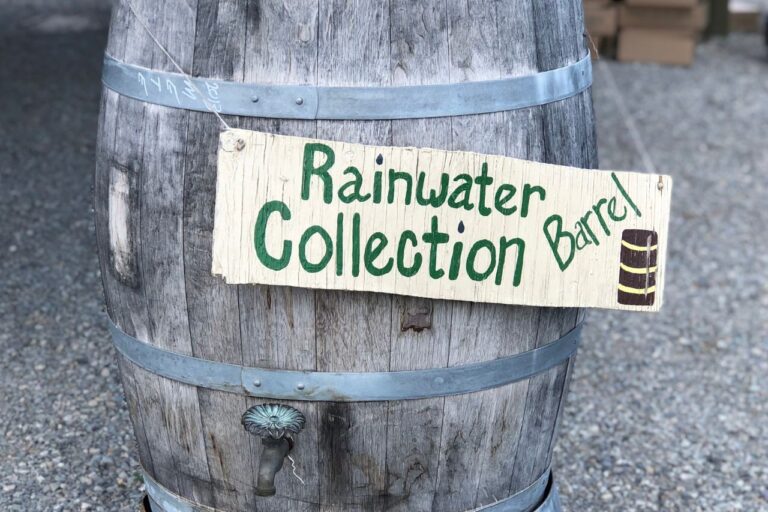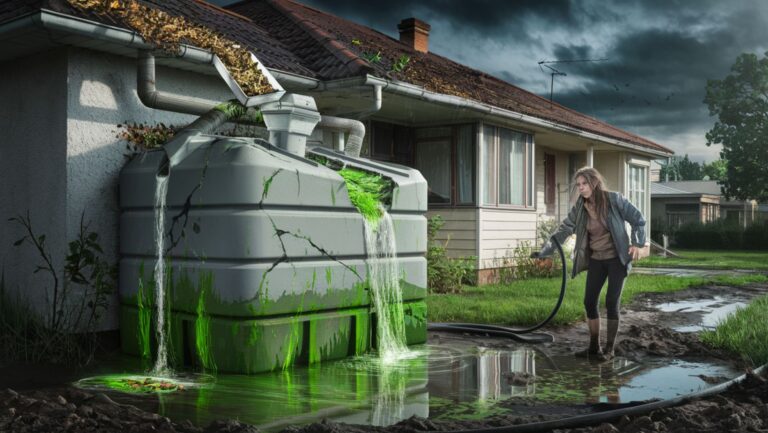Rainwater Harvesting: A Case Study in Agricultural Impact
Did you know that nearly 70% of the world’s freshwater is used for agriculture? With the global population projected to reach 9.7 billion by 2050, finding sustainable ways to manage water resources is crucial. Rainwater harvesting is a technique that captures and stores rainwater for future use, reducing reliance on conventional water supplies.
This method has a significant agricultural impact by improving crop yields and water efficiency. By adopting sustainable water management practices like rainwater harvesting, farmers can mitigate the effects of droughts and water scarcity.
Key Takeaways
- Rainwater harvesting reduces reliance on conventional water supplies.
- It improves crop yields and water efficiency in agriculture.
- Sustainable water management practices mitigate the effects of droughts.
- Rainwater harvesting is a crucial technique for future water security.
- Adopting this method can have a significant agricultural impact.
The Growing Water Crisis in American Agriculture
The American agricultural sector is facing an unprecedented water crisis. As the demand for food production increases, the strain on water resources becomes more pronounced. Water scarcity is emerging as a critical challenge for farmers across the United States.
Current Water Challenges Facing US Farmers
Farmers in the US are grappling with various water-related challenges. The southeastern region, for instance, is experiencing increased water scarcity due to climate change. It is anticipated that agricultural irrigation by surface and groundwater withdrawals in Georgia will continue to rise through 2050. This trend underscores the need for sustainable water management practices.
| Region | Current Water Challenges | Projected Changes by 2050 |
|---|---|---|
| Southeastern US | Increased water scarcity | 20% increase in agricultural irrigation |
| Western US | Drought conditions | Continued strain on groundwater resources |
The Economic Impact of Water Scarcity
Water scarcity has significant economic implications for farmers. Reduced water availability can lead to decreased crop yields, impacting farm revenues. The economic impact is not limited to farmers; it can also affect the broader agricultural economy.
Climate Change and Rainfall Pattern Shifts
Climate change is altering rainfall patterns, further complicating water management for farmers. Shifts in precipitation can lead to both droughts and floods, making it challenging to maintain consistent water supplies. Rainwater harvesting emerges as a viable strategy to mitigate these effects.
By adopting rainwater harvesting systems, farmers can reduce their dependency on groundwater and surface water, thereby enhancing their resilience to climate change. This approach not only helps in conserving water but also contributes to the overall sustainability of agricultural practices.
Understanding Rainwater Harvesting Systems
As the agricultural sector faces growing water challenges, rainwater harvesting offers a viable solution. Rainwater harvesting systems are designed to collect and store rainwater for various agricultural uses, reducing the reliance on groundwater and mitigating the impact of droughts.
Basic Components of Agricultural Rainwater Collection
The basic components of a rainwater harvesting system include collection surfaces, conveyance systems, storage tanks, and treatment or filtration systems. Rooftop collection systems are a common method where rainwater is collected from the roofs of farm buildings. The conveyance system, typically consisting of gutters and downspouts, directs the water to storage tanks.
Types of Harvesting Systems for Farm Use
There are several types of rainwater harvesting systems suitable for agricultural use.
- Rooftop Collection Systems
- Surface Runoff Collection
- In-Field Water Harvesting
Rooftop Collection Systems are ideal for farms with large roof areas, providing a clean source of water with minimal contamination risk. Surface Runoff Collection involves capturing rainwater that flows over the land, which can be used for irrigation and other farm needs. In-Field Water Harvesting techniques, such as contour bunding and check dams, help to retain rainwater in the field, reducing runoff and enhancing soil moisture.
Water Quality Considerations for Agricultural Use
While rainwater harvesting offers numerous benefits, water quality is a critical consideration for agricultural use. The quality of harvested rainwater can be affected by various factors, including the collection surface, atmospheric conditions, and storage practices. Implementing proper treatment and filtration systems is essential to ensure the water is safe for crops and livestock.
By understanding the different components and types of rainwater harvesting systems, farmers can make informed decisions about implementing these techniques on their farms, ultimately contributing to agricultural water conservation and improved crop yields.
Case Study: The Johnson Family Farm in Nebraska
The Johnson Family Farm in Nebraska serves as a prime example of how rainwater harvesting can revolutionize agricultural practices. By adopting this innovative technique, the farm has significantly improved its water efficiency and crop yields.
Farm Profile and Initial Water Challenges
The Johnson Family Farm is a 500-acre agricultural operation in central Nebraska, primarily focusing on corn and soybean production. Before implementing rainwater harvesting, the farm faced substantial water challenges, including frequent droughts and reliance on groundwater, which was becoming increasingly depleted.
The farm’s initial water challenges were compounded by the region’s variable rainfall patterns, making it difficult to maintain consistent crop yields. The Johnson family recognized the need for a sustainable solution to these issues.
Implementation of Rainwater Harvesting System
The Johnsons implemented a comprehensive rainwater harvesting system, which included the construction of two large reservoirs to collect and store rainwater. This system was designed to capture runoff from the farm’s fields and surrounding areas, significantly reducing their dependence on groundwater.
The implementation process involved careful planning and collaboration with local experts to ensure the system’s effectiveness and sustainability. The farm also integrated precision agriculture technologies to optimize water use and monitor soil moisture levels.
Five-Year Results and ROI Analysis
Over the five years following the implementation of the rainwater harvesting system, the Johnson Family Farm observed a significant increase in crop yields and a reduction in water costs. The farm’s corn yields increased by an average of 20%, while soybean yields rose by 15%. The ROI analysis revealed that the initial investment in the rainwater harvesting system was recovered within three years, primarily due to the savings on groundwater pumping and the increased revenue from higher crop yields.
Farmer Testimonial and Lessons Learned
“Implementing rainwater harvesting has been a game-changer for our farm,” says Mark Johnson. “Not only have we improved our water efficiency, but we’ve also seen a significant boost in our crop yields. The system’s been a great investment, and we’re proud to be leading by example in our community.”
The Johnson Family Farm’s experience highlights the potential of rainwater harvesting to enhance agricultural sustainability and profitability. Their success story serves as a valuable lesson for other farmers considering similar initiatives.
How Can Rainwater Harvesting Help the Agriculture Sector
Rainwater harvesting presents a multifaceted solution for agricultural water management, addressing several key challenges faced by farmers today. By capturing and storing rainwater, farmers can reduce their reliance on other water sources, mitigate the impacts of drought, and improve overall crop health.
Reducing Dependency on Groundwater
One of the significant benefits of rainwater harvesting is its potential to reduce dependency on groundwater. Groundwater is a critical resource for irrigation, but over-extraction can lead to depletion and land subsidence. By using harvested rainwater, farmers can decrease the strain on groundwater resources, helping to ensure their sustainability for future generations.
Mitigating Drought Impact
Droughts can have devastating effects on agricultural productivity. Rainwater harvesting provides a buffer against such climate variability. Stored rainwater can be used during dry periods, reducing the impact of drought on crops and maintaining productivity levels.
Improving Crop Yield Consistency
Consistent water supply is crucial for maintaining healthy crops and achieving optimal yields. Rainwater harvesting helps in providing a reliable source of water, thereby improving crop yield consistency. This consistency is vital for farmers who need to meet market demands and maintain their livelihoods.
Enhancing Soil Health and Reducing Erosion
Rainwater harvesting can also contribute to enhanced soil health. By reducing runoff, it minimizes soil erosion and allows the soil to retain more of its nutrients. Healthy soils are more productive and require fewer external inputs, such as fertilizers.
| Benefit | Description | Impact |
|---|---|---|
| Reducing Groundwater Dependency | Decreases strain on groundwater resources | Sustainability of groundwater for future use |
| Mitigating Drought Impact | Provides water during dry periods | Reduces crop loss during droughts |
| Improving Crop Yield Consistency | Ensures reliable water supply | Maintains optimal crop yields |
| Enhancing Soil Health | Reduces soil erosion and retains nutrients | Improves soil productivity |
As highlighted by a study on sustainable agriculture practices, “the adoption of rainwater harvesting can significantly enhance the resilience of farming systems” (
“Rainwater harvesting is a simple yet effective way to improve water security and reduce the vulnerability of crops to drought.”
). By embracing rainwater harvesting, the agricultural sector can move towards more sustainable water management practices, ultimately benefiting both farmers and the environment.
Measuring the Impact: Crop Yield and Water Efficiency Data
The implementation of rainwater harvesting systems has revolutionized agricultural practices by significantly improving crop yields and water efficiency. This section delves into the data that demonstrates the effectiveness of rainwater harvesting in enhancing agricultural productivity.
Comparative Analysis: Before and After Implementation
A comparative analysis of crop yields before and after the implementation of rainwater harvesting systems reveals a significant improvement. Farms that adopted rainwater harvesting saw an average increase in crop yields by 25% due to the consistent availability of water for irrigation. This improvement is attributed to the reduction in dependency on rainfall and groundwater, allowing for more controlled and efficient water use.
Seasonal Variations and Adaptability
Rainwater harvesting systems also demonstrate adaptability to seasonal variations, providing a buffer against droughts and reducing the impact of excessive rainfall. By storing rainwater during wet periods, farmers can irrigate during dry spells, thus maintaining crop health and yield consistency.
Long-term Sustainability Metrics
Long-term sustainability metrics indicate that rainwater harvesting contributes to improved water usage efficiency, energy savings, and soil health indicators. Specifically:
Water Usage Efficiency
Farms using rainwater harvesting systems show a 30% improvement in water usage efficiency due to reduced evaporation and runoff.
Energy Savings
The use of rainwater for irrigation reduces the need for pumping groundwater, resulting in a 20% reduction in energy consumption.
Soil Health Indicators
Soil health indicators, such as organic matter content and microbial activity, have shown a 15% improvement due to more consistent moisture levels and reduced erosion.
By adopting rainwater harvesting, farmers can not only enhance their crop yields but also contribute to a more sustainable agricultural practice. The data supports the conclusion that rainwater harvesting is a valuable strategy for maximizing crop yield and promoting agricultural water conservation.
Cost-Benefit Analysis of Rainwater Harvesting for Farmers
A detailed cost-benefit analysis is essential for understanding the impact of rainwater harvesting on agricultural operations. This analysis helps farmers make informed decisions about investing in rainwater harvesting systems.
Initial Investment Requirements
The initial investment for a rainwater harvesting system can be substantial, including costs for tanks, pumps, piping, and installation. For example, a typical farm might spend between $10,000 to $50,000 on a comprehensive rainwater harvesting system, depending on its size and complexity.
Operational and Maintenance Costs
Once installed, rainwater harvesting systems require regular maintenance to ensure optimal performance. Operational costs include energy for pumping, maintenance of equipment, and occasional repairs. These costs are generally lower than those associated with traditional irrigation methods.
Some key maintenance tasks include:
- Regular inspection of tanks and pipes
- Cleaning of gutters and downspouts
- Checking for leaks and damage
Financial Returns and Payback Period
The financial returns on investment in rainwater harvesting come from several sources, including reduced water bills, increased crop yields due to more consistent water supply, and potential savings from avoiding the costs associated with drought-related crop failures. The payback period can vary, but many farmers see a return on their investment within 5 to 10 years.
A study on the financial returns of rainwater harvesting highlighted the following benefits:
- Average increase in crop yield: 15%
- Average reduction in water bills: 20%
- Average payback period: 7 years
Available Grants and Incentive Programs
To encourage the adoption of rainwater harvesting, various government and private programs offer grants and incentives. These can significantly offset the initial investment costs. Farmers should research available programs in their region to maximize their financial benefits.
For instance, the USDA’s Natural Resources Conservation Service (NRCS) provides financial assistance to farmers who implement conservation practices, including rainwater harvesting.

Implementation Challenges and Solutions
As farmers increasingly turn to rainwater harvesting to enhance irrigation practices, they must navigate a range of implementation challenges. The process involves not just the installation of a new system, but also addressing various regulatory, technical, and operational issues.
Regulatory and Permitting Hurdles
One of the primary challenges is navigating the complex regulatory landscape surrounding rainwater harvesting. Farmers must comply with local, state, and federal regulations, which can vary significantly. For instance, some states have specific laws governing the collection and use of rainwater, while others may require permits for certain types of harvesting systems. Understanding these regulations is crucial to avoid legal issues and ensure the system’s legitimacy. For more information on rainwater harvesting regulations, farmers can refer to resources like the Academia.edu document on Rainwater Harvesting for Greenery and.
Technical Challenges in System Design
Designing an effective rainwater harvesting system poses technical challenges, including determining the appropriate size of the collection tanks, selecting the right materials, and ensuring proper filtration and distribution systems. The system’s design must be tailored to the specific needs of the farm, taking into account factors like crop type, soil characteristics, and local rainfall patterns. Proper system design is critical to maximizing water efficiency and minimizing losses.
Seasonal Variability Management
Managing seasonal variability in rainfall is another significant challenge. Farmers must design their systems to accommodate fluctuations in rainfall, ensuring that they have sufficient storage capacity for dry periods. This may involve implementing strategies for water conservation during wet periods and rationing during dry spells. Effective management of seasonal variability is key to maintaining consistent crop yields.
Integration with Precision Agriculture Technologies
Integrating rainwater harvesting systems with precision agriculture technologies can enhance their efficiency and effectiveness. This involves using sensors, data analytics, and automation to optimize water distribution and application. By leveraging these technologies, farmers can improve crop yields, reduce water waste, and enhance overall farm productivity.
In conclusion, while implementing rainwater harvesting systems presents several challenges, understanding and addressing these issues can lead to successful and sustainable agricultural practices. By navigating regulatory hurdles, overcoming technical challenges, managing seasonal variability, and integrating with precision agriculture technologies, farmers can maximize the benefits of rainwater harvesting.
Scaling Rainwater Harvesting: From Small Farms to Industrial Agriculture
As the agricultural sector continues to evolve, scaling rainwater harvesting systems becomes crucial for sustainable water management in agriculture. The ability to adapt these systems to different farm sizes and types is essential for maximizing their benefits.

Adaptations for Different Farm Sizes
Rainwater harvesting techniques for crops can be tailored to suit various agricultural operations. For small farms, simple collection systems can be effective, while larger industrial farms may require more complex and extensive systems.
- Small farms: Simple collection systems, low-cost implementation
- Medium farms: Modular systems, adaptable to changing needs
- Large industrial farms: Extensive collection networks, advanced water management technologies
Integration with Existing Irrigation Systems
Integrating rainwater harvesting with existing irrigation systems can enhance water efficiency and reduce reliance on groundwater. This integration can be achieved through:
| Integration Method | Benefits |
|---|---|
| Direct Pumping | Immediate water supply, reduced energy costs |
| Storage and Release | Water availability during dry periods, reduced irrigation costs |
Community-Based Approaches for Shared Resources
Community-based approaches to rainwater harvesting can provide shared resources and knowledge among farmers. This collaborative approach can lead to more efficient use of water resources and mutual benefits.
“Community-based rainwater harvesting initiatives have shown significant potential in promoting sustainable water management practices among local farmers.”
Future Innovations in Rainwater Harvesting Technology
The future of rainwater harvesting in agriculture is likely to be shaped by technological innovations, including advanced materials for collection systems and smart technologies for water management.
By embracing these innovations and scaling rainwater harvesting systems, the agricultural sector can move towards more sustainable water management practices.
Conclusion: The Future of Rainwater Harvesting in Sustainable Agriculture
The future of rainwater harvesting in sustainable agriculture is promising, driven by continued innovation and adoption. As the agricultural sector faces growing water challenges, rainwater harvesting offers a viable solution to reduce dependency on groundwater and mitigate the impact of droughts.
By implementing rainwater harvesting systems, farmers can improve crop yield consistency, enhance soil health, and reduce erosion. The Johnson Family Farm case study demonstrates the potential for significant returns on investment and long-term sustainability.
As the industry continues to evolve, we can expect to see further innovations in rainwater harvesting technology, including integrations with precision agriculture and community-based approaches for shared resources. With its numerous benefits and growing adoption, rainwater harvesting is poised to play a critical role in shaping the future of sustainable agriculture.
Frequently Asked Questions
What is rainwater harvesting and how can it benefit the agriculture sector?
Rainwater harvesting is the collection and storage of rainwater for future use. In agriculture, it can help reduce dependency on groundwater, mitigate drought impacts, and improve crop yield consistency.
How does rainwater harvesting improve crop yields?
By providing a supplemental water source, rainwater harvesting can help ensure consistent crop watering, even during dry periods, leading to improved crop yields and reduced crop stress.
What are the benefits of using rainwater harvesting in agriculture?
The benefits include reducing groundwater dependency, mitigating drought impacts, improving crop yield consistency, enhancing soil health, and reducing erosion.
What are the different types of rainwater harvesting systems used in agriculture?
There are various types, including rooftop collection systems, surface runoff collection systems, and pond-based systems, each with its own advantages and considerations.
How can farmers implement rainwater harvesting on their farms?
Farmers can start by assessing their water needs, evaluating their rainfall patterns, and selecting a suitable rainwater harvesting system that fits their farm size and budget.
What are the initial investment requirements for rainwater harvesting systems?
The initial investment can vary widely, depending on the system size, complexity, and materials used, but it can range from a few thousand dollars to tens of thousands of dollars.
Are there any grants or incentive programs available for farmers to implement rainwater harvesting?
Yes, there are various government programs, non-profit organizations, and private companies that offer grants, tax credits, and other incentives to support the adoption of rainwater harvesting systems.
How can rainwater harvesting be scaled up for industrial agriculture?
Scaling up rainwater harvesting for industrial agriculture requires careful planning, large-scale system design, and integration with existing irrigation systems, as well as community-based approaches for shared resources.
What are the long-term sustainability metrics for rainwater harvesting in agriculture?
Long-term sustainability metrics include water savings, crop yield improvements, reduced groundwater dependency, and improved soil health, among others.
How can rainwater harvesting be integrated with precision agriculture technologies?
Rainwater harvesting can be integrated with precision agriculture technologies, such as sensors, drones, and data analytics, to optimize water use, improve crop yields, and reduce waste.







